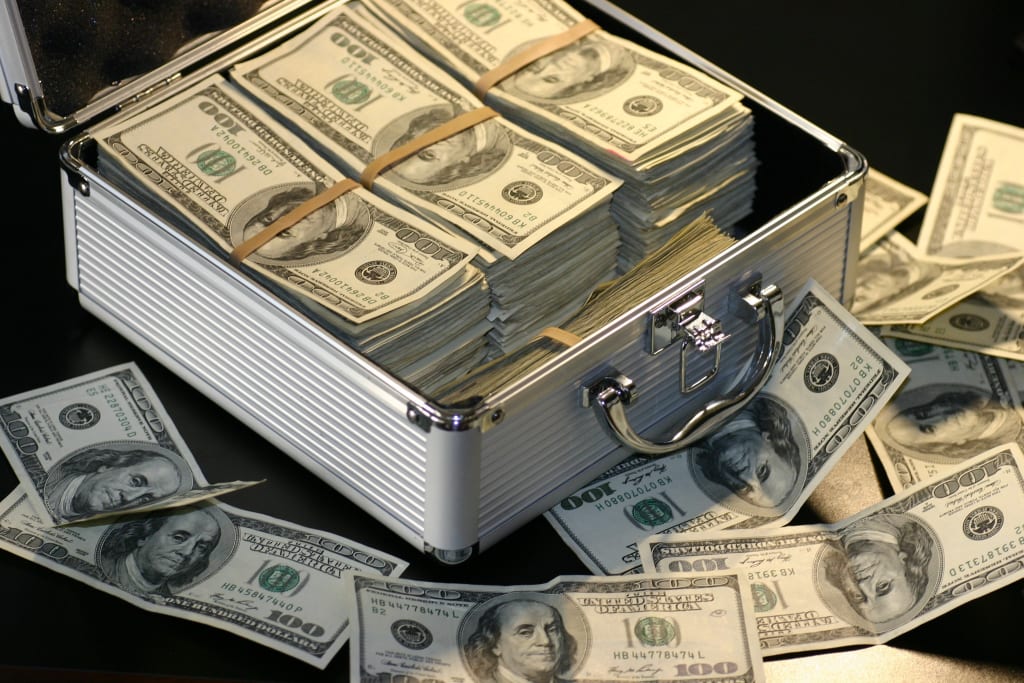Title: The Evolution of the Dollar: Tracing the Journey of the World's Reserve Currency
Tracing the Journey of the World's Reserve Currency

Introduction
The United States dollar, often symbolized by the "$" sign, is a ubiquitous currency that holds a prominent place in the global economic landscape. Its significance spans far beyond the borders of the United States, as it serves as the world's primary reserve currency and a medium of exchange in international trade. The journey of how the dollar came to occupy this prestigious position is a fascinating tale of history, economics, and geopolitics.
The Early Beginnings
The origin of the dollar can be traced back to colonial America. In the late 17th century, English settlers in the American colonies established a form of currency known as the "Spanish dollar," which was commonly used in trade due to its silver content and widespread recognition. This coin laid the foundation for the concept of a dollar, even before the United States existed as a nation.
The Birth of the U.S. Dollar
The establishment of the United States as an independent nation in 1776 marked a pivotal moment in the history of the dollar. In 1792, the U.S. Congress passed the Coinage Act, which officially created the U.S. dollar as the country's official currency. The dollar was initially based on the bimetallic standard, where both gold and silver were used as backing for the currency. This system facilitated commerce and helped establish trust in the newly formed nation's financial system.
The Gold Standard Era
During the 19th century, the U.S. adopted the gold standard, linking the value of the dollar to a specific quantity of gold. This provided stability and predictability to the currency's value, both domestically and in international trade. The gold standard facilitated global trade by ensuring that participating nations could exchange their currencies for a fixed amount of gold, bolstering the dollar's credibility on the world stage.
The Shift to the Fiat System
The Bretton Woods Agreement of 1944 marked a significant turning point in the dollar's history. In this post-World War II era, the U.S. dollar was pegged to gold, while other major currencies were pegged to the dollar. This arrangement established the dollar as the world's primary reserve currency and led to the creation of international institutions like the International Monetary Fund (IMF).
However, the Bretton Woods system faced challenges as economic disparities grew between nations. In 1971, President Richard Nixon took the historic step of ending the dollar's direct convertibility to gold, effectively moving the world away from the gold standard. This marked the shift to a fiat currency system, where the value of the dollar was no longer directly linked to a physical commodity but was determined by the trust and stability of the U.S. economy.
The Dollar as a Global Reserve Currency
Following the end of the gold standard, the U.S. dollar retained its role as the world's primary reserve currency. This status was driven by factors such as the size and stability of the U.S. economy, the liquidity of dollar-denominated assets, and the global reach of American financial institutions. Countries and central banks worldwide began to accumulate dollar reserves to facilitate international trade and stabilize their own economies.
The Dollar's Influence Today
Today, the U.S. dollar remains an integral part of the global financial system. It is the most widely used currency for international transactions, and commodities such as oil and gold are often priced and traded in dollars. The dollar's dominance is also reflected in its significant presence in foreign exchange reserves held by central banks worldwide.
Conclusion
The journey of the U.S. dollar from its colonial beginnings to its current status as the world's primary reserve currency is a testament to the evolution of economic systems, global trade, and geopolitical dynamics. While its journey has been marked by shifts from commodity-backed currencies to the fiat system, the dollar's enduring significance underscores the stability and influence of the United States in the world economy. As the global financial landscape continues to evolve, the story of the dollar's rise and resilience remains a captivating narrative that intertwines economics, history, and international relations.






Comments (1)
good